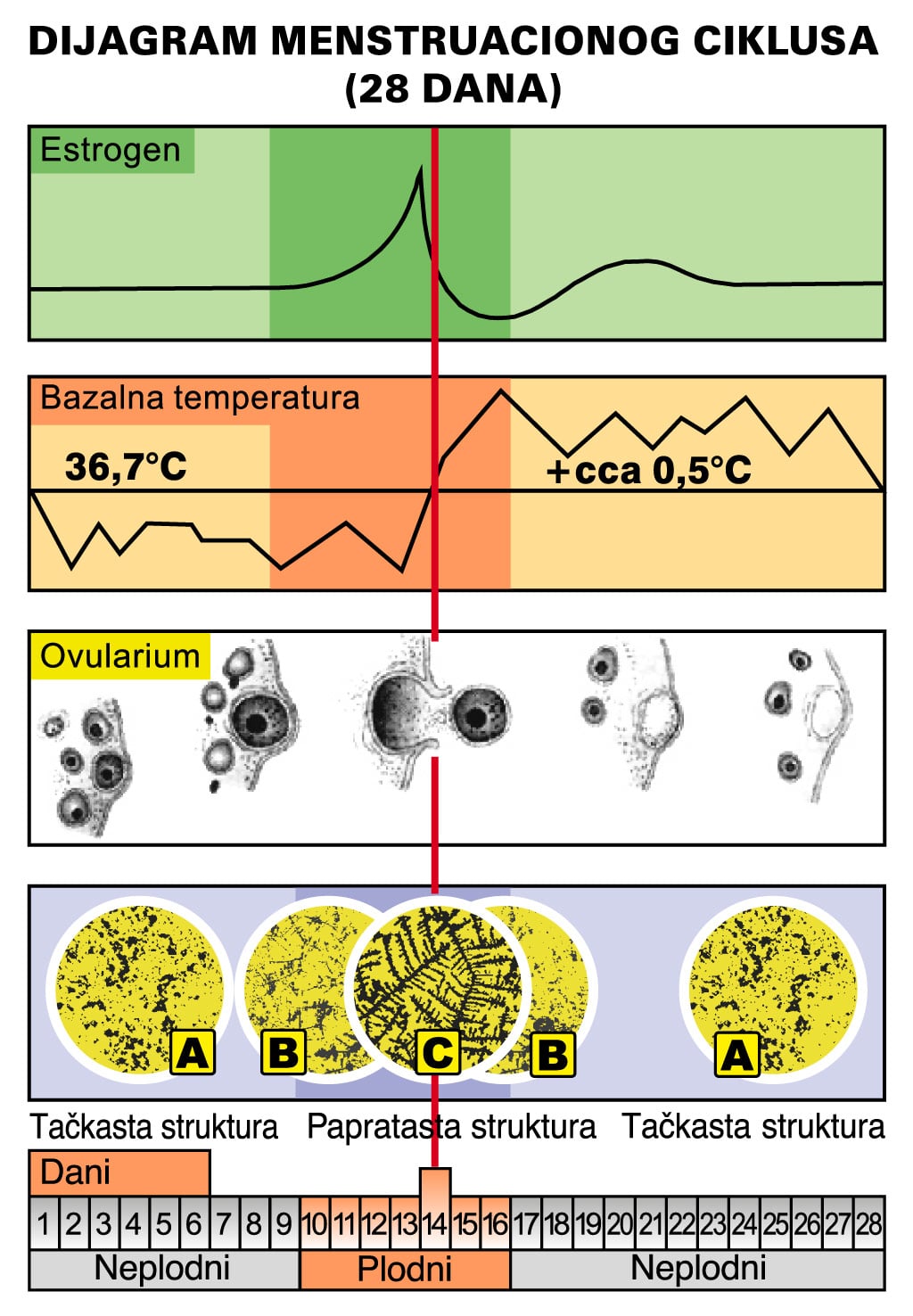With regular use you can reliably determine 7 fertile days
It has been proven that an increased level of estrogen hormones during fertile days (see “Diagram of the menstrual cycle”) increases salt content of the saliva. On those days, in dried saliva sample, using a microscope you can see crystals of salt which appear like a fern, therefore we say the fertile days are characterized with fern structure. On the ovulation day the level of estrogen hormones (as well as salt level) is the highest, so is the fern structure most dense. During other fertile days, a mixed structure can be seen – branching ferns appear on certain parts of the image. During infertile days there is no prominent salt concentration in saliva, shown image has dotted structure (no fern).
The first research on this subject was conducted in 1957 by Italian scientists Cesare Andreoli and Mario Della Porta from the University in Torino (link). Since then, this method has been confirmed in many scientific papers, all over the world.
Basal temperature method – incomplete and inaccurate
Basal body temperature is your body temperature measured first thing in the morning, or after at least 3 hours of continuous sleep. In order to measure this temperature you need a precise instrument – basal thermometer, which is able to measure temperature in at least 10th parts of the Celsius degree, or even in 100 parts. Price of these instruments is comparable with Maybe Baby™ microscope.
1-2 days after ovulation, the basal temperature rises for a few tenths of a degree (C). The increase of temperature remains up to the beginning of the next menstruation. This method is incomplete because by measuring the basal temperature you can determine the moment when the ovulation has already passed – meaning you can stay pregnant even if you had sexual intercourse 4-5 days before noticed increment of basal temperature. Additionally, this method is inaccurate because the morning body temperature can be affected by many factors.
Unreliability of predicting fertile days by menstrual cycle monitoring
Numerous computer programs, apps and charts used to pinpoint fertile days consider by default that woman has a regular monthly cycle, and do not take in consideration both the psychological and physical life of women, as well as climatic factors.
Impracticality of medical and laboratory methods
Gynecologist check-up is the method of similar degree of reliability (neither this method is 100% accurate), but it is impractical because it takes constant (day by day, or every 2 days) check-ups or often lab visits. Gynecological examinations can be a complementary method using the Maybe Baby™ microscope, which is a more practical and incomparably cheaper solution!

